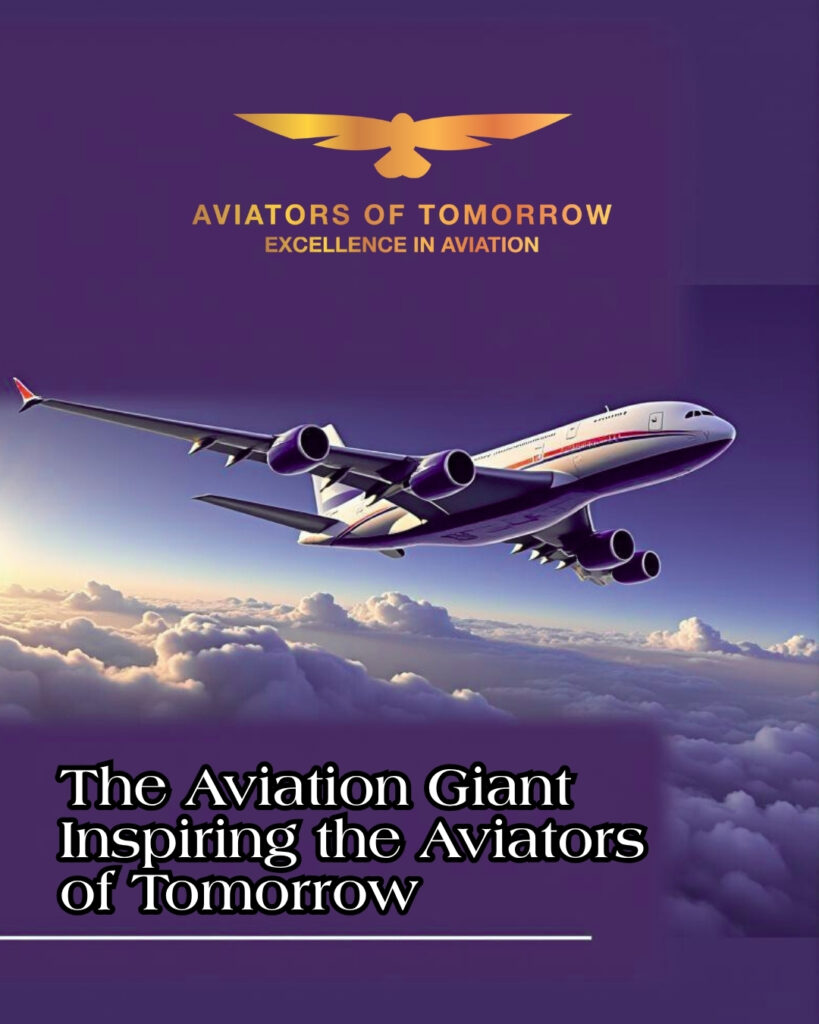When we talk about the most iconic aircraft in aviation history, one name inevitably stands out: the Airbus A380. As the world’s largest passenger airliner, the Airbus A380 is more than a symbol of size and luxury; it’s a benchmark of aeronautical engineering and innovation.
Studying the Airbus A380 isn’t just about appreciating its grandeur; it’s about understanding how far technology, design and human ambition have come together to redefine modern air travel. The Airbus A380 serves as a masterclass in systems management, efficiency and the evolving dynamics of airline operations.
Table of Contents

🛫 The Birth of a Superjumbo
In the early 1990s, Airbus engineers envisioned an aircraft that could revolutionize long-haul travel. At that time, Boeing’s 747 ruled the skies, but Airbus sought to create something even more efficient and capable, a plane that could carry more passengers, reduce congestion at busy hubs and improve per-seat operating costs.
After more than a decade of development and testing, the Airbus A380 took its maiden flight on April 27, 2005, from Toulouse, France. It entered commercial service in 2007 with Singapore Airlines, marking a new era in global aviation.
With its double-deck configuration, advanced technology and passenger capacity never seen before, the A380 became a flying icon, a true giant of the skies.
🧠 Engineering Excellence: What Makes the A380 Special
The Airbus A380 is a technical masterpiece built for performance, comfort and safety. Here’s why it remains a standout even today:
1. Unmatched Size and Capacity
The Airbus A380 can carry up to 853 passengers in an all-economy configuration or around 525 in a typical three-class layout. It measures 72.7 meters (238 feet) long, has a wingspan of 79.8 meters (261 feet) and a maximum takeoff weight of around 1.2 million pounds (560 tons), making it the largest passenger aircraft ever built.
2. Fly-by-Wire and Glass Cockpit
For pilots, the A380’s advanced cockpit offers Airbus’ signature fly-by-wire system, side-stick controls and glass cockpit displays that integrate critical flight data seamlessly. These systems enhance safety and situational awareness while reducing pilot workload, an essential skill for future aviators transitioning to larger commercial aircraft.
3. Powerful Yet Efficient Engines
The Airbus A380 is powered by four Rolls-Royce Trent 900 or Engine Alliance GP7200 turbofan engines. Each engine delivers roughly 70,000 pounds of thrust, enabling the aircraft to cruise at Mach 0.85 (about 945 kmph) at 43,000 feet. Despite its size, the A380’s aerodynamic efficiency allows it to achieve an impressive range of 8,000 nautical miles, connecting major global hubs without refueling.
4. Passenger Comfort and Design
The A380 isn’t just an engineering marvel; it’s a passenger favorite. Airlines like Emirates, Singapore Airlines and Qantas use it to offer luxurious cabins, including private suites, showers and onboard lounges. Its quiet cabin, smooth ride and spacious interiors redefine the long-haul travel experience.
💸 Operating the Airbus A380: Costs, Efficiency and Economics
While the A380 is a technological triumph, it also presents complex challenges, particularly in terms of operating costs and efficiency.
1. Fuel Consumption and Maintenance
On average, the A380 burns around 17400 liters of fuel per hour, depending on flight conditions. While this seems massive, the cost per passenger per mile is often lower than that of smaller jets when operating at full capacity. However, the four-engine design and high maintenance requirements make it more expensive to operate than newer twin-engine aircraft like the Airbus A350 or Boeing 787 Dreamliner.
2. Crew and Ground Operations
Operating such a large jet requires a highly trained crew. A typical A380 flight involves two to four pilots and 20+ cabin crew members, depending on the airline’s service model. Ground handling also demands specialized equipment from extended jet bridges to massive tugs and catering vehicles designed for the A380’s height and scale.
3. Airport Compatibility
When first introduced, few airports were capable of handling the A380. Many had to upgrade their runways, taxiways and gates to accommodate its weight and wingspan. Today, over 140 airports worldwide are certified for A380 operations.
4. Economic Shifts
Despite its popularity among passengers, changing airline economics eventually caught up with the A380. As airlines moved toward point-to-point travel models using more fuel-efficient twinjets, the demand for such a massive aircraft declined. Airbus officially ended A380 production in 2021, with the final delivery going to Emirates in 2022.
👨✈️ Lessons for Future Aviators
For student pilots, the Airbus A380 represents more than a large aircraft; it embodies the principles of advanced aircraft systems, crew coordination and global flight operations. Here are key takeaways for future aviators:
1. Systems and Automation Management
The A380 relies heavily on automation from flight controls to engine monitoring. Learning how to manage automation intelligently (rather than over-relying on it) is a vital skill for any pilot aspiring to fly commercial jets.
2. Crew Resource Management (CRM)
Operating an aircraft like the A380 demands teamwork, communication and leadership. CRM principles such as workload sharing, situational awareness and decision-making are foundational in both small training aircraft and large commercial jets.
3. Understanding Operational Economics
Pilots don’t just fly airplanes; they contribute to efficient operations. Learning about fuel planning, payload optimization and cost management helps future aviators appreciate the business side of aviation.
4. Environmental Awareness
With growing emphasis on sustainability, the A380 teaches important lessons about balancing innovation with environmental responsibility. Modern aviators must be prepared to embrace eco-friendly aircraft technologies and evolving industry standards.
🌐 The Airbus A380’s Legacy and Future
Even though Airbus has stopped production, the A380 continues to dominate major international routes. Airlines like Emirates, British Airways, Qatar Airways and Lufthansa have reintroduced their A380 fleets due to rising post-pandemic travel demand.
There’s also a push to retrofit existing A380s with modern cabins and fuel-saving upgrades, extending their operational lives into the 2030s. Airbus is even studying sustainable aviation technologies inspired by the A380’s design and aerodynamics for future aircraft concepts.
For aviators of tomorrow, this means one thing: the lessons learned from the A380 will continue to shape the next generation of airliners and the next generation of pilots.
You may read our blog “Different Types of Aircraft Used in Flight Training“
🧭 Conclusion
The Airbus A380 stands as one of aviation’s greatest achievements, a blend of engineering brilliance, operational complexity and global influence. While its commercial journey has faced challenges, its impact on pilot training, technology and passenger experience is undeniable.
For aspiring pilots, understanding the A380 means more than memorizing specifications. It’s about appreciating how innovation and teamwork can push the boundaries of what’s possible in flight. Whether you’re training in a Cessna 172 or dreaming of commanding a long-haul jet, the A380 serves as a reminder of aviation’s endless potential and the exciting future that awaits the aviators of tomorrow.

